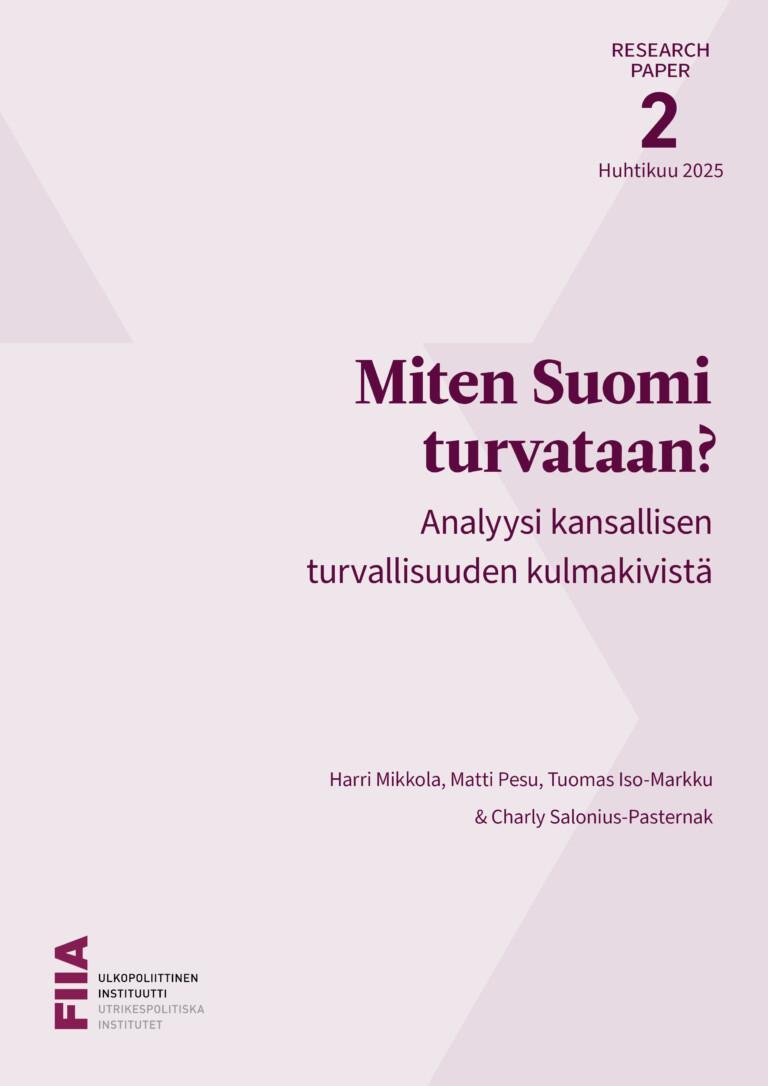
The changes made to Russia’s nuclear doctrine and the publication of the document in November have only one significant goal: to help Russia win the war in Ukraine. The doctrine says nothing new about Russia’s nuclear threshold.
In its new nuclear doctrine, Russia declares that it may retaliate in kind if its military forces outside its borders are struck with nuclear weapons. Russia has now formalized its practice during the Ukraine war, whereby nuclear deterrence also serves as a shield for its wars of aggression. Other changes to the doctrine were announced in September: for example, Russia states that it considers a critical threat to its sovereignty or a massive air attack targeted within its borders as possible reasons for the use of nuclear weapons. It will also use nuclear deterrence to protect its dominion over Belarus.
Since Russia claims that the occupied territories of Ukraine are part of Russia, even a massive Ukrainian air attack on these areas could, according to its nuclear doctrine, lead Russia to use nuclear weapons. The publication of the doctrine, however, was timed to coincide with the US decision to allow the use of its long-range weapons against targets inside Russia’s legal territory. By timing the publication in this way, Russia is effectively admitting that it actually shares the view of Ukraine and its supporters that the occupied territories are not really part of Russia.
The doctrinal changes do not affect the essence of Russia’s nuclear deterrence. Although states use their nuclear doctrines to articulate their thinking on nuclear weapons, both for themselves and for their adversaries, it is pointless to look for a nuclear threshold in them. The decision to use nuclear weapons is possibly the most significant strategic decision a state can make in its history. Thus Russia, like any other state, does not want to tie its hands in advance on the use of nuclear weapons. In practice, Russia states in its nuclear doctrine that it will use nuclear weapons if it deems that it is in its national interests to do so – just as it stated in its previous version, but in different words.
If Russia ever considers using nuclear weapons, it is unlikely to look to its doctrine for confirmation that their use is allowed. Instead, Russia would weigh up the military and political implications of using nuclear weapons, as well as the risks associated with both nuclear use and restraint. The answers to these questions can be influenced by Russia’s adversaries through deterrence. Russia’s goal is to win the war in Ukraine, which is only possible if the West limits its support for Ukraine and does not intervene in the war. In the current circumstances, using nuclear weapons against NATO or Ukraine would jeopardize the achievement of this goal.
Some of the changes to the doctrine were made public in the autumn, but the document itself was not published until Ukraine was given permission to strike Russia with long-range weapons. This suggests that Russia’s primary aim is to influence Western decisions related to the war in Ukraine. The publication of the doctrine was preceded by a meeting of the Russian Security Council in September, during which the changes were announced. At the same time, the US and the UK were considering the possibility of allowing Ukraine to strike inside Russia with long-range weapons. Although the changes were approved at that time, the doctrine was not published until Russia needed another tool to threaten the West.
Russia has resorted to its new nuclear doctrine as a means of coercion twice because it has only limited means to make nuclear threats, as long as it is not willing to take enormous risks and actually prepare to carry out nuclear strikes. Nevertheless, the publication of the doctrine serves Russia’s interests. When the discussion shifts to nuclear weapons, less attention is paid to the situation on the battlefield, where Ukraine’s position is weakening at a time when the result of the US presidential election makes continued support for Ukraine more uncertain than before.
Russia’s nuclear blackmail is primarily preventive in nature. Russia seeks to avert developments that are unfavourable to itself, or at least to buy itself time to prepare for them so that it can win the war. Russia is unlikely to believe that publishing its nuclear doctrine could overturn the permission granted to Ukraine to strike with Western weapons within Russia’s borders. However, if Ukraine were to acquire a substantial arsenal of weapons, with which it could launch operationally decisive strikes or a large-scale attack inside Russia, Russia’s political objectives in Ukraine could be jeopardized. Nuclear coercion is one way of attempting to divert the strategic thinking of Ukraine and its supporters away from such possibilities.
As expected, Ukraine’s largest backers have stated that intimidation will not work and support will continue as before. However, US officials have also assessed that Ukraine’s permission to strike Russian territory will not resolve the war in Ukraine’s favour. This is probably also the reason for authorizing strikes inside Russia now rather than in spring 2023, for example, when Ukraine was preparing its counterattack, and when greater military assistance and the removal of all restrictions could have had a decisive operational impact.
The policy of Ukraine’s main supporters has been based on the assumption that the front line will remain largely unchanged and that the war will eventually end in negotiations. The fundamental reason for this policy is Russia’s nuclear coercion. Nuclear blackmail can only be said to have been ineffective if Western policy changes and support for Ukraine increases significantly. However, Ukraine’s main backers have shown by rationing and withholding military assistance that they fear Russia’s defeat more than its partial victory.












